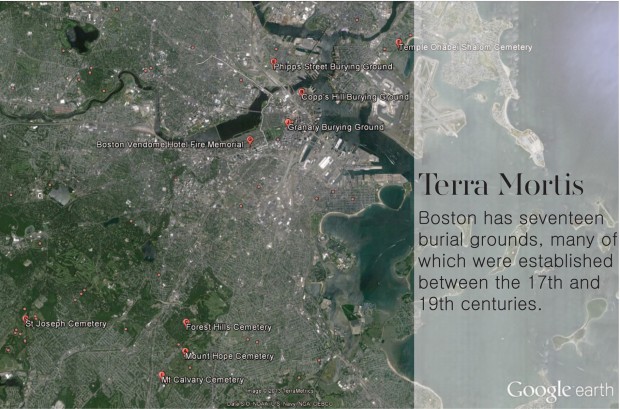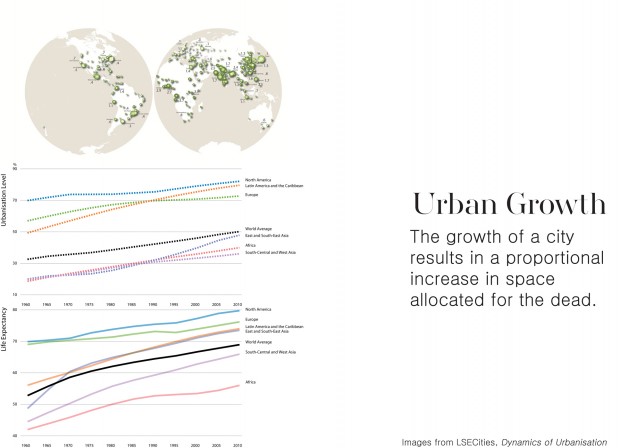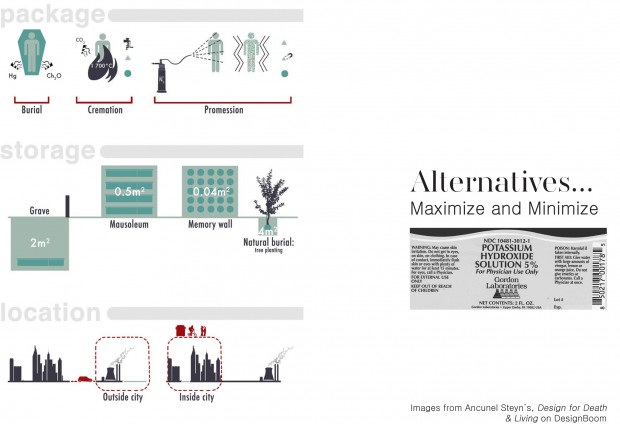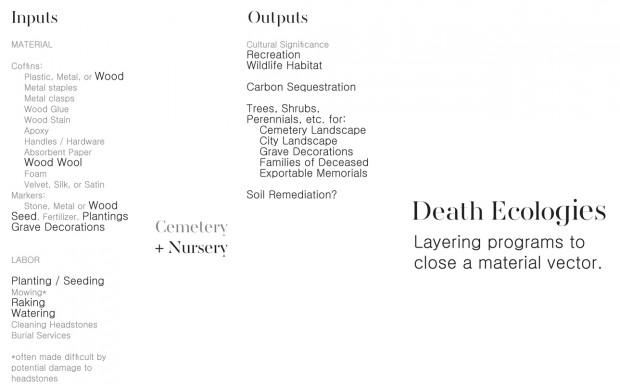Networked Urbanism
design thinking initiatives for a better urban life
apps awareness bahrain bike climate culture Death design digital donations economy education energy extreme Extreme climate funerals georeference GSD Harvard interaction Krystelle mapping market middle east mobility Network networkedurbanism nurra nurraempathy placemaking Public public space resources Responsivedesign social social market Space time time management ucjc visitor void waste water Ziyi
Cemeteries are at the center of a growing urban issue – with higher densities of the living we will inevitably face higher densities of the dead. However, while a number of designers and scientists have considered alternatives that either minimize the spatial requirements of human remains, suggest new dispersed, layered, digital or environmentally friendly typologies or combinations thereof, few have looked at the cemetery as part of a larger urban material ecology.
Thought provoking as the alternatives are, they can often inspire less thought and more provocation. The rituals of death are deeply ingrained and culturally significant, therefore, rethinking cemeteries requires designers to allow for traditional modes of mourning. Even if a significant portion of society were to accept the possibility that their bodies will be flash frozen and ground into a compostable powder, we already have a legacy of spatium mortus – land that is sacrosanct and untouchable (at least not without significant cultural and emotional backlash).
In response to this dilemma, I am proposing a layering of programs within cemetery grounds that goes beyond recreational use to turn cemeteries into productive spaces while maintaining respect for cultural norms. In simple terms a cemetery is a single-program urban space with specific material inputs, and no material output. However, that does not always have to be the case. By breaking down the underlying systems of cemeteries, the possibility of closing a material vector emerges.
Seeing as cemeteries are already organized into a field of plots with specialized and complicated maintenance regimes, the addition of a plant nursery is almost intuitive. While the growth of hardwoods necessary to close the container to container loop is a lengthy process, species with shorter growth schedules can be underplanted and either used within the cemetery or exported for profit. All the while the visitors and local ecosystem benefit from the well-studied beneficial effects of urban forests.



